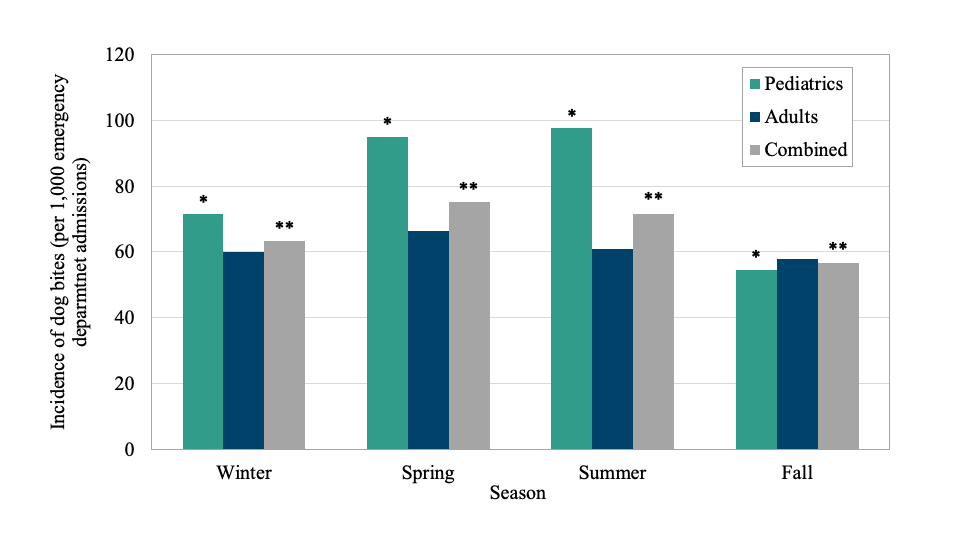Emergency Medicine: All Areas
Emergency Medicine 15
397 - Nationwide Seasonal Variation of Pediatric Dog Bites: A Decade’s Look at the National Electronic Injury Surveillance System
Publication Number: 397.406

Shreyas Chandragiri
Student
Sidney Kimmel Medical College at Thomas Jefferson University
Waverly , Pennsylvania, United States
Presenting Author(s)
Background:
As dog ownership increases in the United States, it becomes increasingly important to monitor the epidemiology of dog bites to better direct prevention efforts. Dog bite injuries have a higher morbidity in the pediatric population, heightening the importance of prevention and intervention efforts.We hypothesized that there was significant seasonal variation in dog bite incidence among children within a national cohort over the last decade.
Objective: 1. Determine if there is significant seasonal variation in dog bite incidence among children within a national cohort over the last decade.
Design/Methods: We queried the National Electronic Injury Surveillance System (NEISS) for all records between 2010 and 2020. Demographic, outcome, and injury information was abstracted. Counts and proportions were obtained, and univariate analysis was performed using chi-squared tests. Data was stratified by age (< 18 years) and by season. Risk-adjusted Poisson regression was performed to determine incidence rate ratio (IRR).
Results: A total of 152,860,942 patients were identified. 46,053,152 (30%) were pediatric and of these, 0.08% presented to the emergency department with dog bites. A higher rate of pediatric bites per 1,000 ED visits were observed in the spring and summer months compared to fall and winter (P< 0.001). This contrasted with adults which did not exhibit seasonal variation (FIGURE) Poisson regression revealed higher IRRs in the Spring (1.324 [95% CI: 1.285-1.364], P< 0.001) and Summer (1.361 [1.321-1.403], P< 0.001) while the Fall (0.759 [0.734-0.784], P< 0.001) had a lower IRR with reference to the Winter season.
Conclusion(s): A significant increase in the national incidence of dog bite injuries among children was observed during the spring and summer months across 10 years. These findings should inform public health agencies, health systems, and caregivers to try to reduce the morbidity due to these injuries in the pediatric population.
